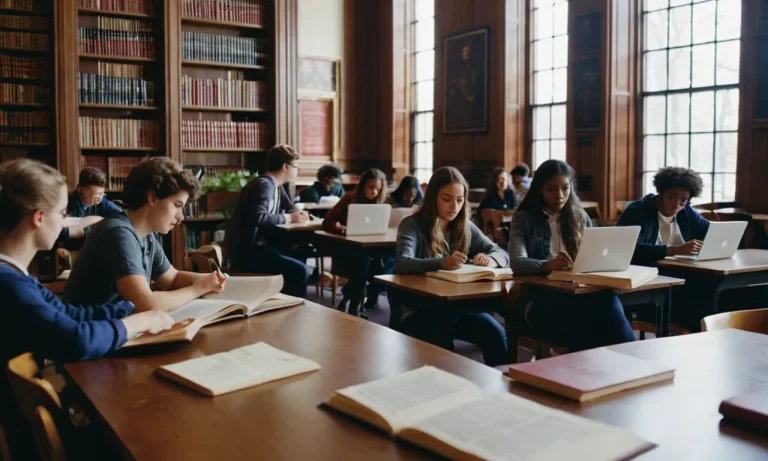Building a school is a monumental undertaking that requires careful planning, substantial resources, and a deep understanding of the various factors that influence the overall cost. Whether you’re a government official, a private investor, or a community leader, determining the cost of constructing a school is a critical step in ensuring the successful implementation of your educational project.
If you’re short on time, here’s a quick answer to your question: The cost of building a school can range from several hundred thousand dollars for a small elementary school to tens of millions of dollars for a large, state-of-the-art high school or university campus.
The exact cost depends on various factors such as the size of the school, location, construction materials, amenities, and local labor costs.
In this comprehensive guide, we’ll delve into the intricate details that contribute to the overall cost of building a school. We’ll explore the key factors that influence the budget, provide cost estimates for different types of schools, and offer valuable insights to help you plan and execute your school construction project effectively.
Factors Influencing the Cost of Building a School
Building a school is a significant investment that requires careful planning and consideration of various factors. The cost of constructing a school can vary widely, depending on several key elements that impact the overall budget.
Let’s delve into the major factors that influence the cost of building a school.
Size and Scope of the Project
The size and scope of the school project are among the primary determinants of the construction cost. A larger school with more classrooms, specialized facilities, and amenities will naturally require a higher budget than a smaller establishment.
According to the National Center for Education Statistics, the average cost per square foot for building a new public school in the United States ranges from $150 to $400, depending on the state and the specific requirements of the project.
Location and Site Preparation
The geographical location and site conditions play a crucial role in determining the construction costs. Building a school in an urban area with limited space and higher land prices can be significantly more expensive than constructing in a rural or suburban setting.
Site preparation, such as grading, excavation, and demolition of existing structures, can add substantial costs to the project. Additionally, factors like soil quality, environmental regulations, and the need for specialized foundations or retaining walls can further impact the overall expenses.
Construction Materials and Methods
The choice of construction materials and methods can greatly influence the cost of building a school. Traditional materials like brick and concrete tend to be more affordable, while using more modern and sustainable materials like steel, glass, or advanced insulation systems can increase the budget.
Additionally, opting for prefabricated or modular construction techniques can potentially reduce costs and shorten the construction timeline. According to a report by Construction Specifier, modular construction can save up to 20% in construction costs compared to traditional methods.
Amenities and Special Features
The amenities and special features incorporated into the school design can significantly impact the overall cost. Features like auditoriums, gymnasiums, libraries, science labs, and computer rooms can add substantial expenses to the project.
Additionally, specialized facilities for students with special needs, such as ramps, elevators, and accessible restrooms, may require additional investments. Furthermore, incorporating sustainable features like solar panels, rainwater harvesting systems, or energy-efficient heating and cooling systems can increase the upfront costs but may lead to long-term savings on utility bills.
It’s important to note that the cost of building a school can vary greatly based on the specific requirements, location, and other factors. To ensure accurate budgeting and cost estimation, it’s recommended to consult with experienced architects, contractors, and educational facility planners who can provide expert guidance and insights tailored to your unique project needs.
Cost Estimates for Different Types of Schools
The cost of constructing a school can vary significantly depending on the type and size of the institution. From small elementary schools to sprawling university campuses, the expenses involved in building these educational facilities can range from a few million dollars to hundreds of millions.
In this section, we’ll explore the approximate costs associated with different types of schools, providing a comprehensive overview for those considering such a project.
Elementary Schools
Elementary schools are typically the most cost-effective to construct, with an average price tag ranging from $15 million to $30 million for a standard facility serving around 500 students. This estimate can fluctuate based on factors such as the size of the building, the inclusion of amenities like gymnasiums or libraries, and the geographical location.
According to FacilitiesNet, a reputable source for construction data, the average cost per square foot for elementary school construction in the United States is around $300.
Middle Schools
Building a middle school typically requires a larger investment than an elementary school, with costs ranging from $25 million to $50 million for a facility serving approximately 800 students. These higher expenses are often attributed to the need for specialized classrooms, science labs, and larger recreational areas to accommodate the needs of older students.
According to a report by EDConstructionData, a leading provider of construction cost data for the education sector, the average cost per square foot for middle school construction in the U.S. is around $350.
High Schools
High schools tend to be the most expensive type of K-12 educational facility to construct, with costs ranging from $50 million to $100 million or more for a comprehensive institution serving around 1,500 students.
These higher costs are driven by the need for specialized facilities such as auditoriums, sports complexes, vocational training centers, and advanced science and technology labs. According to a study by School Construction News, the average cost per square foot for high school construction in the U.S. is approximately $400.
Colleges and Universities
The cost of constructing college and university campuses can be staggeringly high, often reaching into the hundreds of millions or even billions of dollars. These institutions require a vast array of facilities, including academic buildings, research labs, student housing, athletic complexes, and supporting infrastructure.
The costs can vary greatly depending on the size and scope of the project, as well as the location and any specialized facilities required. According to data from CollegeConstruction.com, a specialized resource for higher education construction, the average cost per square foot for college and university construction can range from $500 to over $1,000, with some prestigious institutions spending even more.
It’s important to note that these cost estimates are approximate and can fluctuate based on various factors, such as the specific requirements of the project, the location, and the current market conditions.
Additionally, ongoing maintenance and operational costs should be factored into the overall budget for any educational facility. By understanding the potential costs involved, stakeholders can make informed decisions and allocate resources effectively to ensure the successful completion of these vital educational infrastructure projects.
Budgeting and Cost Management Strategies
Building a school is a significant investment that requires meticulous planning and cost management. Developing a comprehensive budget plan is crucial to ensure the project stays within financial constraints.
This involves gathering accurate cost estimates for various components, such as land acquisition, construction materials, labor, equipment, and ongoing operational expenses. According to a report by the U.S. Government Accountability Office, the average cost of constructing a new elementary school in the United States was approximately $25 million in 2020.
However, costs can vary significantly based on location, size, and specific requirements.
Exploring Financing Options
Financing a school construction project often requires a combination of sources, including government funding, bonds, grants, and private investments. Public-private partnerships (P3s) have become an increasingly popular option, where private entities collaborate with public entities to fund, build, and sometimes operate school facilities.
The U.S. Environmental Protection Agency provides information on various green building financing opportunities, which can help offset upfront costs through energy efficiency and sustainable design.
Cost-Saving Measures and Value Engineering
To maximize the budget, cost-saving measures and value engineering techniques can be employed. These may include optimizing building design, utilizing energy-efficient materials and systems, and exploring modular or prefabricated construction methods.
Additionally, effective project management and coordination can help minimize delays and costly overruns. According to a study by the U.S. Green Building Council, green schools can save an average of $100,000 per year on operating costs, making sustainable design a wise investment.
Contingency Planning for Unexpected Expenses
Despite careful planning, unexpected expenses can arise during the construction process. It’s crucial to allocate a contingency fund to cover unforeseen costs, such as changes in material prices, site conditions, or regulatory requirements.
Industry experts recommend setting aside a contingency of 5-10% of the total project cost. Effective risk management strategies, including regular monitoring and proactive communication, can help mitigate potential issues and minimize the need for contingency funds. 😊
By following these budgeting and cost management strategies, school districts and stakeholders can ensure a successful and financially sustainable school construction project. Collaboration, transparency, and a commitment to cost-effectiveness are key to delivering high-quality educational facilities that serve the community for years to come.
👏
Hiring the Right Team for School Construction
Building a school is a massive undertaking that requires the expertise of various professionals. Assembling the right team is crucial for ensuring the project’s success and staying within budget. Here are the key players you’ll need to bring on board:
Architects and Design Professionals
Architects are the driving force behind a school’s design, responsible for translating the educational vision into a functional and aesthetically pleasing structure. They work closely with educators, administrators, and other stakeholders to understand the specific needs of the school community.
An experienced architectural firm, like those accredited by the American Institute of Architects (AIA), can ensure that the design meets all building codes, accessibility requirements, and sustainability goals.
In addition to architects, you may need to hire other design professionals such as interior designers, landscape architects, and lighting consultants. These experts can help create engaging learning environments and outdoor spaces that promote student well-being and academic success.
Construction Managers and Contractors
Once the design is finalized, you’ll need to hire a reputable construction management firm or general contractor to oversee the building process. According to data from the Associated General Contractors of America (AGC), the average cost of school construction in the United States ranges from $200 to $400 per square foot, depending on the region and project complexity.
A skilled construction team can help keep costs in check while ensuring adherence to safety regulations and quality standards.
It’s essential to thoroughly vet potential contractors and review their track record of successful school construction projects. You may also want to consider hiring specialized subcontractors for tasks like HVAC installation, electrical work, and plumbing to ensure top-notch workmanship.
Project Management and Oversight
Overseeing a school construction project is a massive undertaking that requires dedicated project management. You may want to consider hiring a project manager or enlisting the services of a construction management firm to coordinate the various teams, manage budgets and schedules, and ensure seamless communication between all stakeholders.
😊 Effective project management can help mitigate risks, resolve issues promptly, and keep the project on track.
Additionally, it’s crucial to have a robust oversight and quality control process in place. This may involve hiring third-party inspectors or engaging with local authorities to ensure compliance with building codes and regulations.
Regular site visits and progress reports can help identify and address potential problems before they escalate, ultimately saving time and money in the long run.
Conclusion
Building a school is a complex and multifaceted endeavor that requires careful planning, strategic budgeting, and a deep understanding of the various factors that influence the overall cost. From the size and scope of the project to the location, construction materials, and amenities, each aspect plays a crucial role in determining the final price tag.
By considering the key factors outlined in this guide, developing a comprehensive budget plan, exploring financing options, implementing cost-saving measures, and assembling a skilled team of professionals, you can navigate the complexities of school construction with confidence and ensure a successful outcome.
Remember, investing in education is an investment in the future of our communities and societies. By building high-quality schools, we create environments that foster learning, growth, and the development of the next generation of leaders, innovators, and changemakers.






